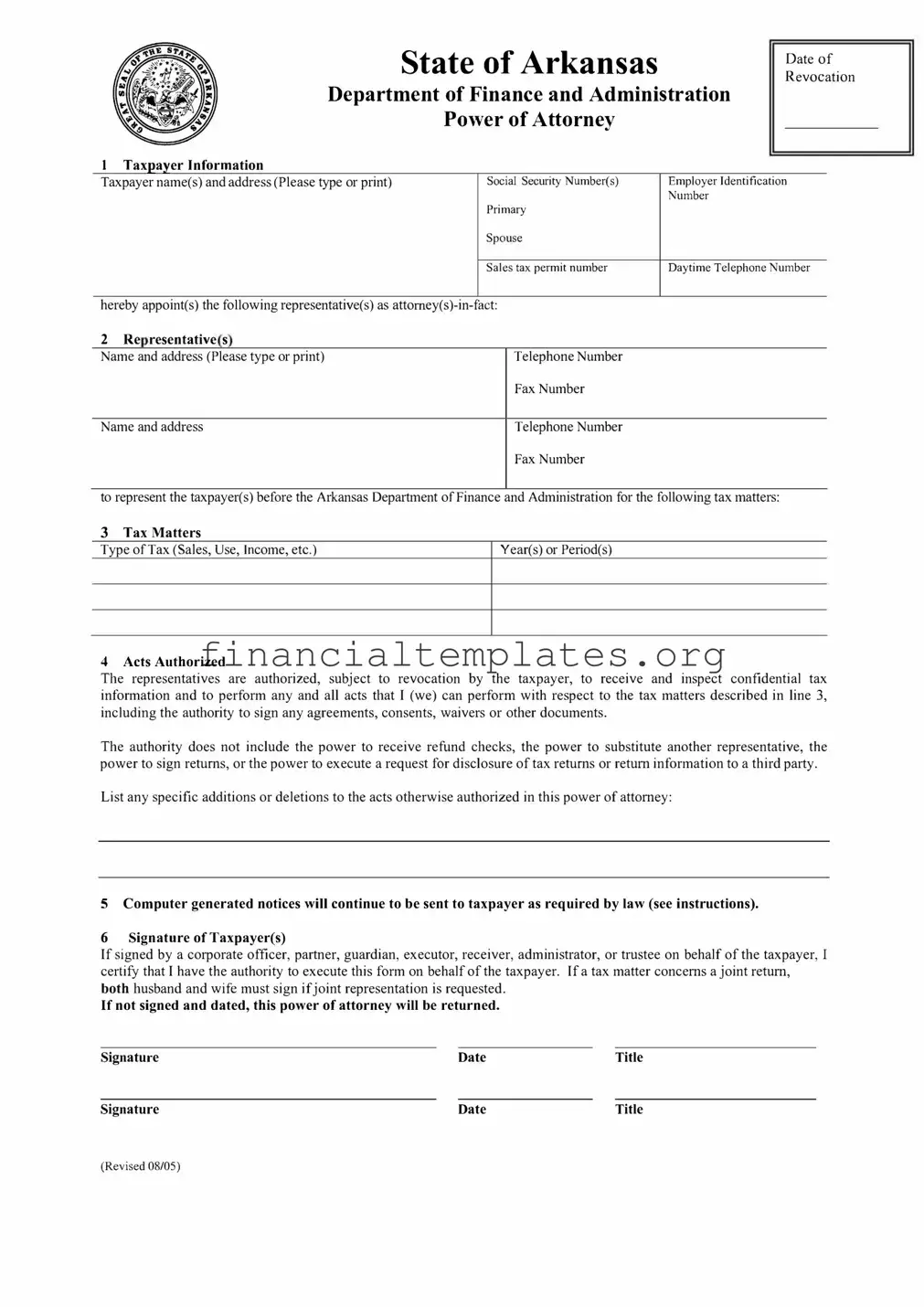The Tax Power of Attorney (POA) DFA POA form allows a person to grant another individual the authority to handle their tax matters. This form is similar to a General Power of Attorney, where one can designate someone to make a wide range of decisions and take actions on their behalf, not limited to financial transactions. The primary distinction lies in the scope of authority, with a General POA covering more than just tax issues.
Comparable to the Tax POA is the Durable Power of Attorney. While both empower an agent to act on behalf of the principal, the Durable POA remains in effect even if the principal becomes incapacitated. This feature is critically important in planning for potential future health challenges, highlighting the role of foresight in legal preparations.
Another document akin to the Tax POA is the Medical Power of Attorney. This type grants an agent the authority to make healthcare decisions on the principal’s behalf when they cannot make decisions for themselves. The major difference involves the nature of the decisions: the Tax POA is financial, while the Medical POA concerns health matters.
The Limited Power of Attorney shares similarities with the Tax POA in that it grants specific, restricted powers to an agent. However, a Limited POA could be drafted for various purposes beyond tax matters, such as selling a property or managing certain business activities. It's flexible, focusing on particular tasks or transactions.
The Financial Power of Attorney, much like the Tax POA, allows an individual to authorize an agent to handle their financial affairs. This includes, but is not limited to, managing bank accounts, paying bills, and making investment decisions. The Tax POA can be viewed as a subset of the broader financial powers granted under a complete Financial POA.
Springing Power of Attorney is conceptually related to the Tax POA but with a key difference: it comes into effect only under circumstances specified in the document, such as the principal’s incapacitation. This mechanism provides additional control over when the agent’s power becomes active, contrasting with the typically immediate effect of a Tax POA.
Revocable Living Trust documents share a central idea with the Tax POA, in the sense that they allow an individual (the grantor) to designate another person (the trustee) to manage their assets. While a trust is more comprehensive and involves ownership transfer to the trust itself, it achieves a similar goal of assigning responsibility for asset management.
The Advance Healthcare Directive, though primarily focused on healthcare decisions, resembles the Tax POA through its feature of appointing someone to act on the principal’s behalf. This document comes into play for medical decisions when the individual cannot express their wishes, illustrating the broad applicability of the POA concept across different areas of personal affairs.
Last but not least, the Guardianship or Conservatorship arrangement echoes the Tax POA's intentions by assigning another individual the authority to make decisions for someone else, often covering personal, healthcare, and financial decisions. This legal mechanism is used when individuals cannot make safe or sound decisions concerning their life and resources, requiring court involvement to ensure their protection.

